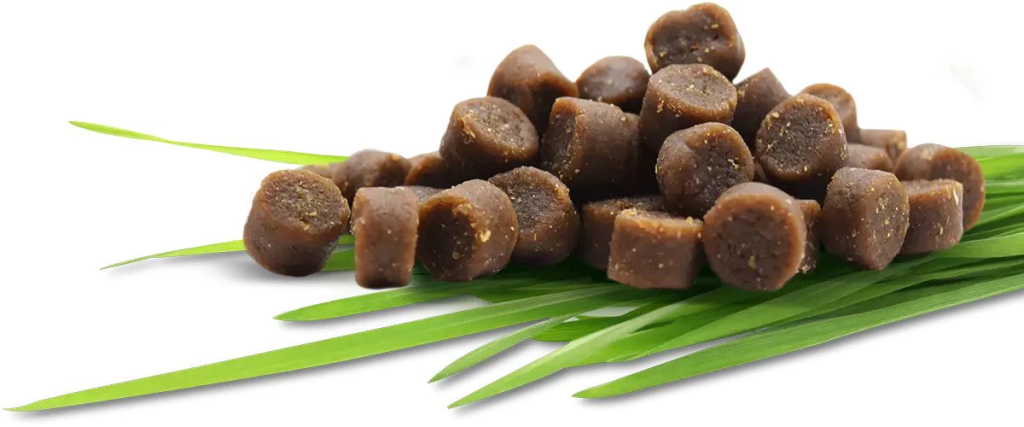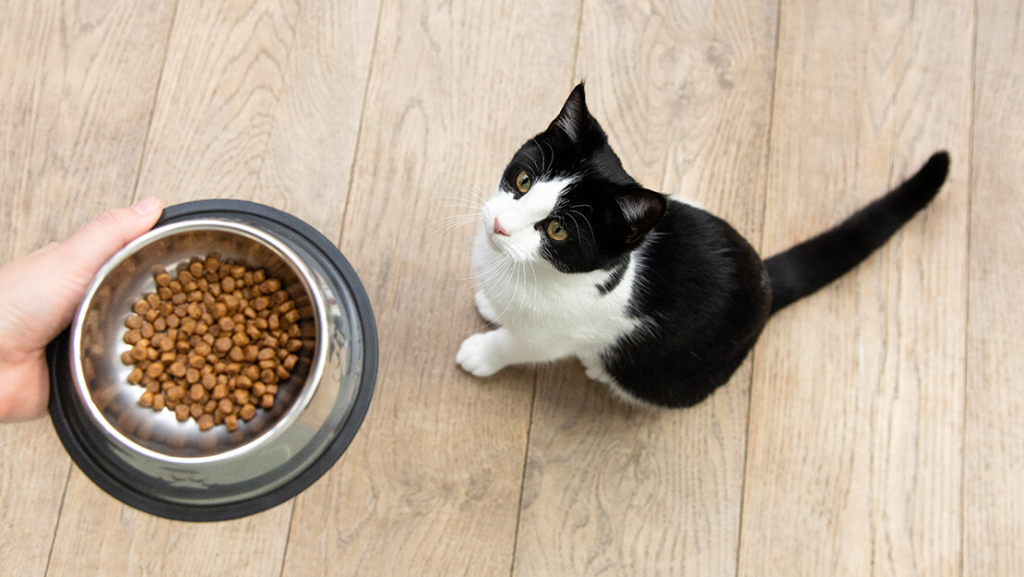There are various types of cat food available to meet the nutritional needs of cats. These can be broadly categorized into the following types:
1.Dry Cat Food (Kibble): This type of cat food is typically economical, has a long shelf life, and can help promote dental health by reducing plaque and tartar. However, some cats may find it less palatable, and it may not provide as much moisture as wet food.

2.Wet Cat Food (Canned or Pouched): Wet cat food has a higher moisture content, which can be beneficial for cats who don’t drink enough water. It often comes in cans or pouches and is available in various flavors and textures. Some cats prefer wet food over dry food, and it can be more appetizing for picky eaters.

3.Semi-Moist Cat Food: This type of cat food has a moisture content that falls between dry and wet food. It often comes in small, pre-portioned packets and is convenient but may contain additives to preserve its semi-moist texture.

4.Raw Cat Food: This type of cat food is made from raw meat, organs, and sometimes bones, mimicking a cat’s natural diet. It is often frozen to preserve freshness and can be prepared at home or purchased commercially.

5.Prescription or Therapeutic Diets: These are formulated to address specific health issues in cats, such as urinary problems, kidney disease, or obesity. They are typically available by prescription and are recommended by veterinarians for cats with specific medical conditions.

6.Grain-Free Cat Food: Some cat owners choose grain-free options, believing that they better align with a cat’s natural diet. However, it’s important to note that the nutritional needs of cats are complex, and the decision to feed a grain-free diet should be made in consultation with a veterinarian.

7.Limited Ingredient Diets: These diets contain a minimal number of ingredients, which can be beneficial for cats with food sensitivities or allergies. They often feature a single protein source and a limited selection of other ingredients.

8.Homemade or Cooked Cat Food: Some pet owners prefer preparing cat food at home using fresh ingredients. If choosing this option, it’s crucial to ensure that the diet is nutritionally balanced and meets the specific needs of cats.

It’s important to consult with a veterinarian to determine the most suitable type of cat food for your cat based on factors such as age, health, and personal preferences. Additionally, the nutritional content of cat food should comply with the guidelines set by organizations like the Association of American Feed Control Officials (AAFCO) or your country’s equivalent regulatory body.




